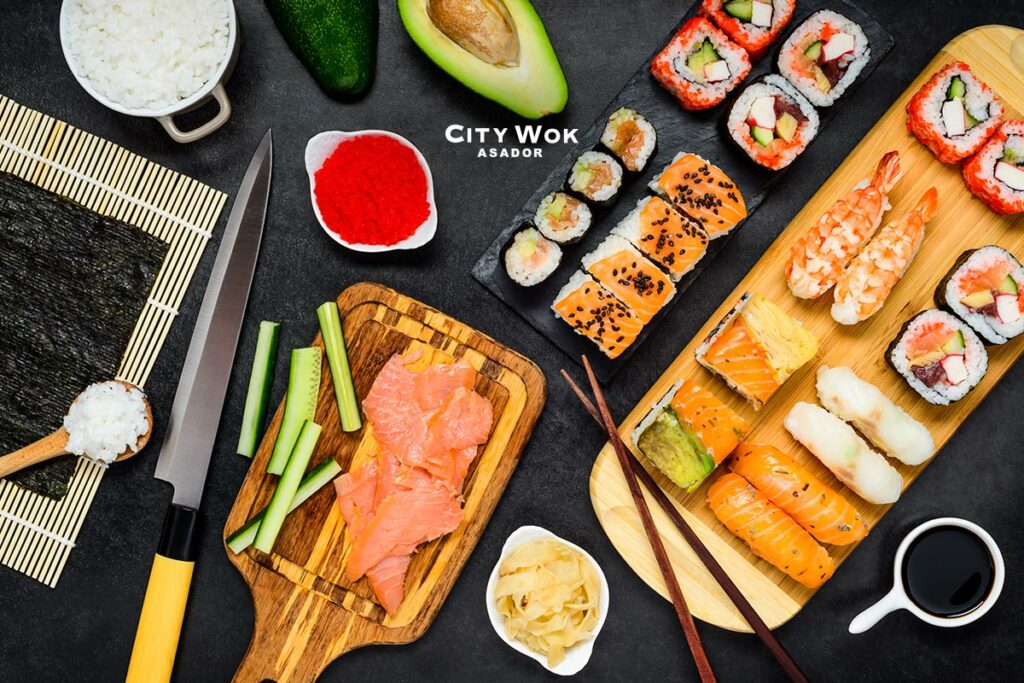Restaurante Japonés en Valencia

En los últimos años, la demanda de un restaurante japonés ha crecido exponencialmente en la Comunidad Valenciana y el resto del país. Esto se debe principalmente a su plato estrella; el sushi que ha conseguido traspasar fronteras y conquistar el paladar de muchos europeos.
Sin embargo, sus orígenes provienen de China. Aunque es cierto que los japoneses fueron quienes crearon la receta tal y como la conocemos ahora, los orígenes del sushi nacieron a orillas del río Mekong en el siglo IV a.C como forma de preservar el pescado para poder consumirlo sin necesidad de ser fresco.
Aunque la cultura china desechaba el arroz por su sabor agrío, sus vecinos nipones comenzaron a consumirlo junto al pescado. Esto se debe a sus valores nutricionales hasta que en el siglo XIX un chef japonés decidió presentarlo en su restaurante con el arroz recién hervido y sin fermentar.
Este plato pasó a ser especialidad de la gastronomía japonesa convirtiéndose en la comida rápida del siglo XX. Su fama ha llegado a tal magnitud que el 45% de los españoles ha afirmado comer sushi al menos una vez al mes.
Importancia de la gastronomía japonesa
Para los japoneses, su gastronomía es un orgullo nacional cuidando tanto su presentación como su sabor y valores nutricionales. Sin embargo, una de sus principales características es la naturaleza y sencillez que la distinguen; si lo pensamos bien, el sushi está compuesto simplemente por arroz, algunas verduras y / o pescado.
La cocina japonesa se compone principalmente por cuatro ingredientes que forman platos específicos para cada estación del año. Estos son el arroz, el trigo, la avena y el frijol. Sin embargo, es una gastronomía muy rica y abundante con peculiaridades en cada una de sus regiones. También integra alimentos como el alga, el bambú, el atún, el salmón, el pato, la ternera…
Destaca por tener una forma de cocción que potencia y realza los sabores originales de los alimentos utilizando el vapor, una plancha conocida como plancha Teppanyaki y cazuelas para hacer sopas. Además, la presentación de los platos es muy importante puesto que se tiene en cuenta la armonía entre los colores y los ingredientes.
La gastronomía japonesa ha experimentado muchas fases y ha crecido con cada accidente demográfico y sociocultural del país nipón hasta desarrollarse como la conocemos hoy en día. La comida japonesa ha estado ligada siempre a China, esto se debe a que en el siglo V y VI, a través de Corea, los chinos llegaron a Japón introduciendo aspectos como la religión, la caligrafía y la gastronomía.
Esta última se vio afectada por el budismo ya que el consumo de la carne se redujo y se introdujeron alimentos como el miso o el tofu. Más tarde, los portugueses llegarían al país volviendo a integrar el cerdo o el pollo en las recetas japonesas originarias y permitiendo que introdujese aspectos de la cocina occidental.
Todos estos cambios han permitido que la gastronomía japonesa sea una de las más reconocidas y especiales del mundo. Esto ha logrado que Tokio sea durante 8 años consecutivos la ciudad que más restaurantes con estrella Michelin alberga.
Restaurante japonés en Valencia
Desde Asador City Wok Alfafar, tu restaurante japonés cerca, hemos querido traer parte de nuestra gastronomía para que los comensales puedan disfrutar de ella. Hemos introducido en la carta recetas japonesas típicas como el sushi, el pato laqueado, el pollo con almendras, la ternera con salsa de ostras blancas, verduras salteadas y la plancha Teppanyaki.
Asimismo, para que todos puedan disfrutar de otras ramas culinarias también tenemos lo mejor de la gastronomía mediterránea, asador argentino y entrantes como alitas de pollo, nuggets, ensaladas, patatas de luxe y muchos oros, además de una gran variedad de postres.
Si quieres visitar nuestro restaurante japonés te esperamos en el Centro Comercial MN4 de Alfafar. Abrimos de lunes a domingo de 13:00 a 16:30h y de 20:00 a 23:20h